Fruit is one of the most nutritious foods you can eat. It is packed with vitamins and minerals, and it helps to keep us healthy. While fresh fruit is always great, sometimes it’s hard to find or too expensive.
If you want to save money and have access to your favorite fruits year-round, then investing in a freezer may be the perfect solution. Having a freezer stocked with your favorite healthy fruits can provide delicious options for various meals and snacks throughout the year.
Here are 56 of your favorite healthy fruits that you should stock in your freezer.
Apples
If you’re in the market for a way to keep your apples fresh for longer, freezing them may be the answer. Apples are one of the most popular fruits around, but they can go bad quickly if not stored properly. Luckily, freezing is an easy and effective way to preserve apples. Here’s how to freeze apples so that they remain fresh and delicious:

First, wash each apple thoroughly before preparing it for freezing. Cut away any bruised or discolored areas on the apple and remove its core and seeds. For best results, cut your apples into thin slices or small chunks that will freeze evenly. Place the prepared pieces on a baking sheet lined with parchment paper and put them in your freezer until frozen solid.
Apricots
Apricots are an incredibly tasty and nutritious fruit. But, unfortunately, their short shelf life can make it difficult to enjoy them for more than a few days. However, with the right technique, it is possible to freeze apricots so that they remain fresh and healthy for much longer. To keep your apricots at their best, here’s how to freeze them effectively:
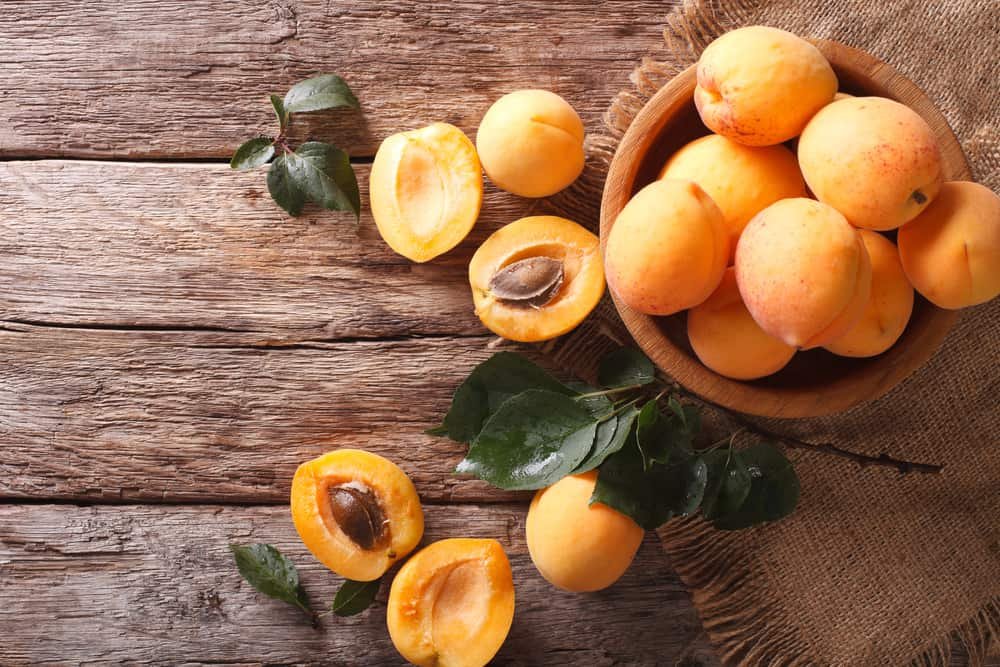
Start by washing the apricots in cold water and patting them dry with a clean towel or paper towel. Cut each one in half and remove any pits before arranging them on a baking sheet lined with parchment paper. Place the baking sheet in the freezer until the apricot halves are frozen solid – this could take up to three hours depending on size of the pieces.
Avocados
Preserving freshness is key when it comes to avocados. The creamy, green fruit can easily go bad if not stored properly. To keep avocados lasting as long as possible, freezing them is an excellent way to extend their shelf life. Freezing avocados will help keep them fresh for months at a time and also prevent them from browning or becoming overly ripe. Here’s how you can freeze your avocados and keep them good for longer:

Start by selecting ripe but firm avocados that are free of bruises or damage. Cut the avocado in half and remove the pit, then scoop out the flesh with a spoon into a bowl or food processor.
Bananas
Bananas are a delicious and nutritious addition to any diet. But before you can enjoy them, it is important to know how to properly store them so they don’t spoil too quickly. Freezing is an easy and effective way of preserving bananas for up to four months! Here’s a step-by-step guide on how to freeze bananas so they stay fresh and delicious.

First, peel the bananas and cut them into pieces that are approximately one inch thick. Place the banana slices on a parchment-lined baking sheet in an even layer. Make sure none of the pieces overlap or touch each other; this will help ensure that all the slices freeze evenly. Then place the sheet in a freezer and allow it to freeze completely, which can take several hours depending on your freezer’s temperature setting.
Blackberries
Freezing blackberries is an excellent way to extend the shelf-life of your berries and keep them fresh for longer. With a few simple steps, you can easily freeze blackberries in order to maximize their freshness.

First, make sure that your blackberries are ripe and fully developed—you want to pick out the sweetest ones! Wash the berries gently in a colander with cold water and pat them dry. Next, spread the berries evenly onto a baking sheet lined with parchment paper or wax paper. Place the baking sheet in the freezer for 1-2 hours or until frozen solid. Once they’re completely frozen, transfer them into an airtight container or resealable plastic bag and store them away from any light sources in your freezer for up to one year.
Black Chokeberry
Do you want to enjoy the benefits of black chokeberries all year round? Freezing them is a great way to keep them fresh and healthy, even when they aren’t in season. Black chokeberry, which have high levels of antioxidants, have been linked to a number of health benefits ranging from reducing inflammation to lowering blood pressure. Here’s how you can freeze black chokeberries for optimal freshness:
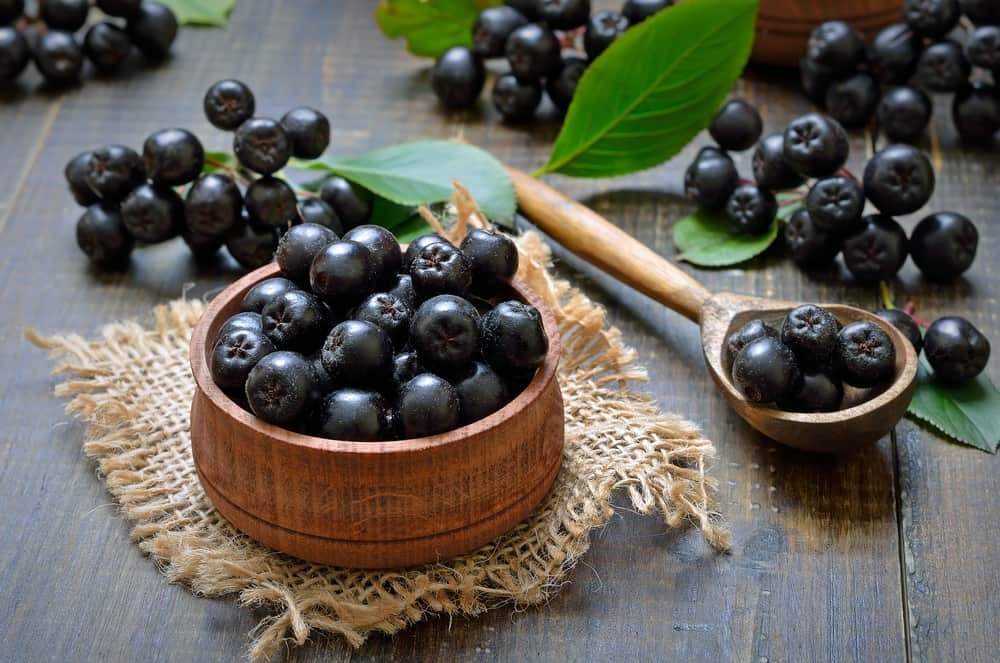
Begin by washing and drying the berries thoroughly. Place them onto a parchment-lined baking sheet in single layers, leaving space between each berry. Place into your freezer for 1-2 hours until they are frozen solid. Then transfer into an airtight container or freezer bag and store in your freezer for up to 12 months. When ready to use, simply remove as many berries as needed and let thaw at room temperature before consuming or using in recipes.
Blackcurrant
Freezing blackcurrants is an excellent way to keep them fresh and healthy for use in baking, smoothies and other recipes. Not only does freezing preserve their flavor, but it also prevents the loss of vitamins and minerals. If you want to maximize their nutritional benefits, here’s how to freeze blackcurrants so they remain as fresh as possible.

Start by washing your blackcurrants with cold water and patting them dry with a paper towel or cloth. Spread them in a single layer on a parchment-lined baking sheet so that none of the berries are touching each other. Place the tray in the freezer for three hours before transferring the frozen berries into heavy-duty plastic bags or airtight containers. Label each bag using a permanent marker with contents and date before returning them to the freezer for long-term storage of up to one year.
Blueberries
For many berry-lovers, blueberries are a summertime staple. But with the summer months coming to an end, how can you keep them fresh? Freezing your blueberries is one way to make sure they last until the next growing season.

Freezing blueberries is an easy task that will help preserve their flavor and texture for up to a year. To freeze, start by sorting through the berries and discarding any that are damaged or overly ripe. Then rinse them off in cold water and pat dry with paper towels. Spread out the berries on a cookie sheet lined with parchment paper and place in the freezer for at least four hours or overnight. Once frozen, transfer them into airtight containers or plastic bags labeled with the date of freezing and store in the freezer until ready to use.
Boysenberries
Freezing Boysenberries is an excellent way to keep them at their freshest and healthiest for longer periods of time. This method of preservation not only maintains the flavor, texture, and nutritional value of the fruit but also extends its shelf life significantly. As a bonus, freezing Boysenberries can help reduce food waste as well. Here are some tips on how to freeze the berries in order to reap these benefits:
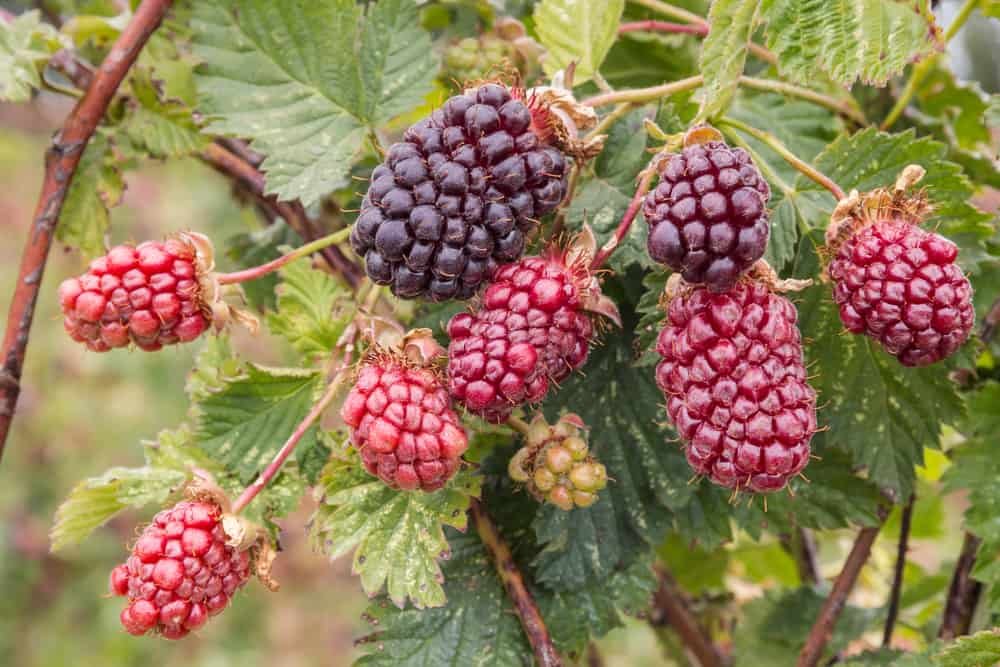
Begin by rinsing off the fruits thoroughly before carefully patting them dry with paper towels or a clean cloth. Spread them out evenly on a baking sheet lined with parchment paper or wax paper; this will prevent any clumps from forming during the freezing process. Place the tray in your freezer for several hours until each berry is completely frozen solid.
Cantaloupe
Freezing cantaloupe is an easy way to keep them fresh and delicious for up to 6-8 months. This quick and simple guide will show you how to freeze cantaloupe so that you can enjoy it for months after buying it. Knowing how to properly prepare, package, and store your frozen cantaloupe will ensure that your fruit is as tasty when thawed as the day you purchased it.

To begin with, select ripe yet firm melons. You should avoid soft or overly ripe specimens as they are more likely to spoil faster in the freezer. Once selected, wash the cantaloupe in cold water and pat dry with a paper towel or cloth before cutting into cubes or slices.
Capers
When it comes to living a healthy lifestyle, fresh ingredients are key. Capers, which are the unopened buds of the Capparis Spinosa plant, offer a wonderful punch of flavor and nutrition to any dish. Unfortunately, due to their fragility and short shelf-life, they can be difficult to store properly. To ensure that you always have access to this nutrient-rich ingredient, consider freezing your capers.

Freezing is an effective way of preserving capers without sacrificing any of their flavor or nutrition. To begin the process of freezing them for long-term storage, start by draining away any brine or vinegar from the jar. Then rinse under cold water until all traces have been removed and pat dry with paper towels.
Cherries
Cherries are a delicious summer treat, but what do you do with them when the season is over? The key to preserving this sweet fruit is to freeze them. Freezing cherries is an easy way to keep them fresh and ready for future snacking or baking. Here’s how you can freeze cherries quickly and safely.
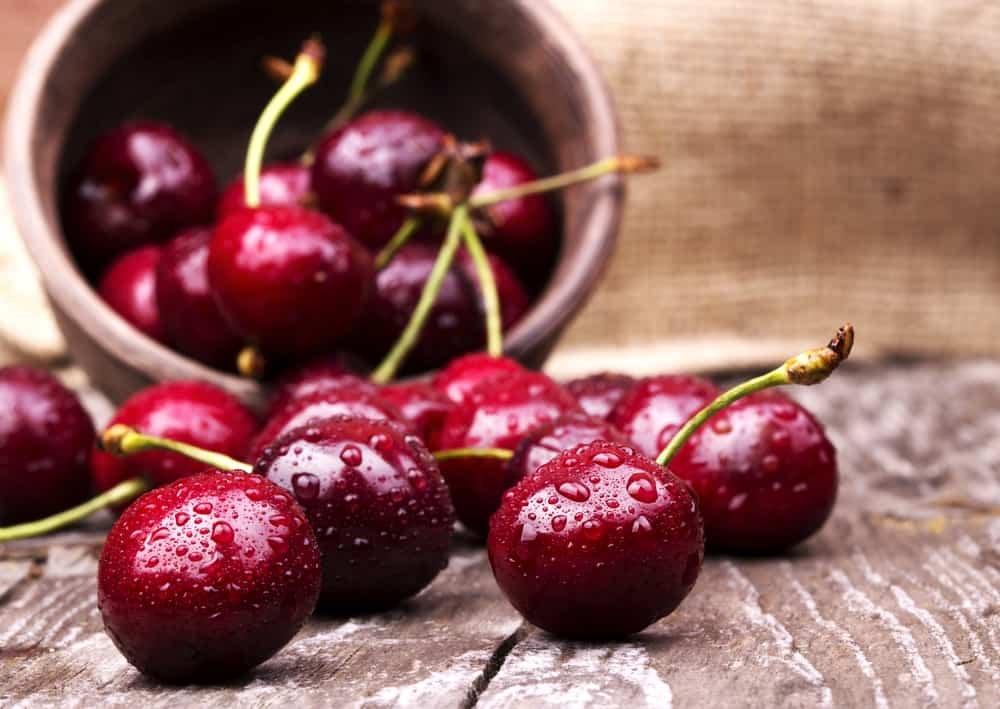
First, make sure you select firm and ripe cherries that are free of blemishes or bruises. Rinse them in cold water and remove their stems. Then spread the cherries out on a baking sheet lined with parchment paper so they are not touching each other. Place the tray in your freezer for two hours until the cherries have frozen solid, then transfer them into airtight containers or freezer bags.
Clementine
Clementines are a delicious and easy to consume citrus fruit. They’re great for adding to salads, throwing into smoothies or simply eating as is. If you have a surplus of clementines and don’t want them to go off, freezing them is a great way to keep their freshness locked in for months. Here’s how:

Firstly, rinse your clementines thoroughly under running water. Then cut them into halves or quarters and place on a baking sheet lined with parchment paper. Place the tray in the freezer for two hours until the pieces are completely frozen through. Transfer your frozen clementines into an airtight container or zip-lock bag for storage in the freezer – this will help lock in their flavor and texture so they remain as fresh as possible when defrosted.
Cranberry
Freezing cranberry is a great way to keep your berries fresh and healthy for up to one year. Cranberries are rich in antioxidants and polyphenols, which make them a great addition to any diet. However, if you’re not able to eat all of the cranberry that you bought before they go bad, you can freeze them. Here are some tips on how to freeze cranberry so that they stay as fresh and healthy as possible:

First, rinse off the cranberries with cold water before freezing them. This will help remove any dirt or bacteria present on the surface of the fruit. Next, spread out the cranberries on a baking sheet lined with parchment paper or wax paper. Place it in the freezer for several hours until they’re completely frozen solid.
Date Palm
Freezing date palms is a great way to keep them fresh and healthy for when you are ready to enjoy their sweet taste. Date palms are an essential part of many diets, so it is important to make sure they stay as fresh and nutritious as possible. This article will provide information on how to freeze date palms properly, ensuring that the quality of your dates remains high.

When freezing date palms, start by selecting firm, ripe dates with no blemishes or bruises. Make sure they are free from any dirt or debris before washing them off in cool water with a little white vinegar added in. After patting the dates dry with a paper towel, remove any stems that may be present before laying them out on parchment paper-lined baking trays.
Durian
Durian is an exotic fruit native to Southeast Asia and is known for its pungent smell, creamy texture and rich flavor. The durian season typically runs from June through September, but with the right methods you can freeze durian and keep it fresh throughout the year. Here’s how to do it:
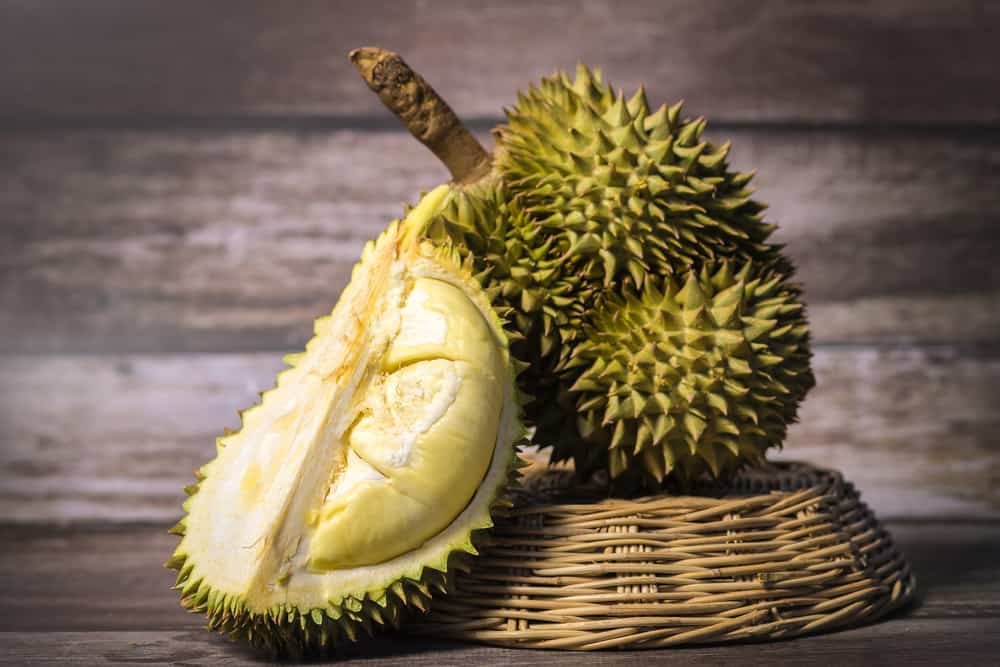
First, select only ripe fruits when freezing. Unripe durians will become mushy after thawing so make sure to choose fruits that are fragrant with little or no blemishes on the skin. Cut them open, scoop out the flesh and separate into individual portions before freezing in airtight containers or resealable bags. To retain nutrients and color of durian flesh, you can blanch them in boiling water for two minutes prior to freezing.
Elderberry
Elderberry is a nutritional powerhouse packed with vitamins, minerals and antioxidants. If you want to enjoy its health benefits throughout the year, freezing elderberries may be your best bet. Freezing your elderberries is a great way to preserve them so they stay fresh and healthy for months to come. Here are some tips on how to freeze Elderberry so you can reap their numerous health benefits all year round.
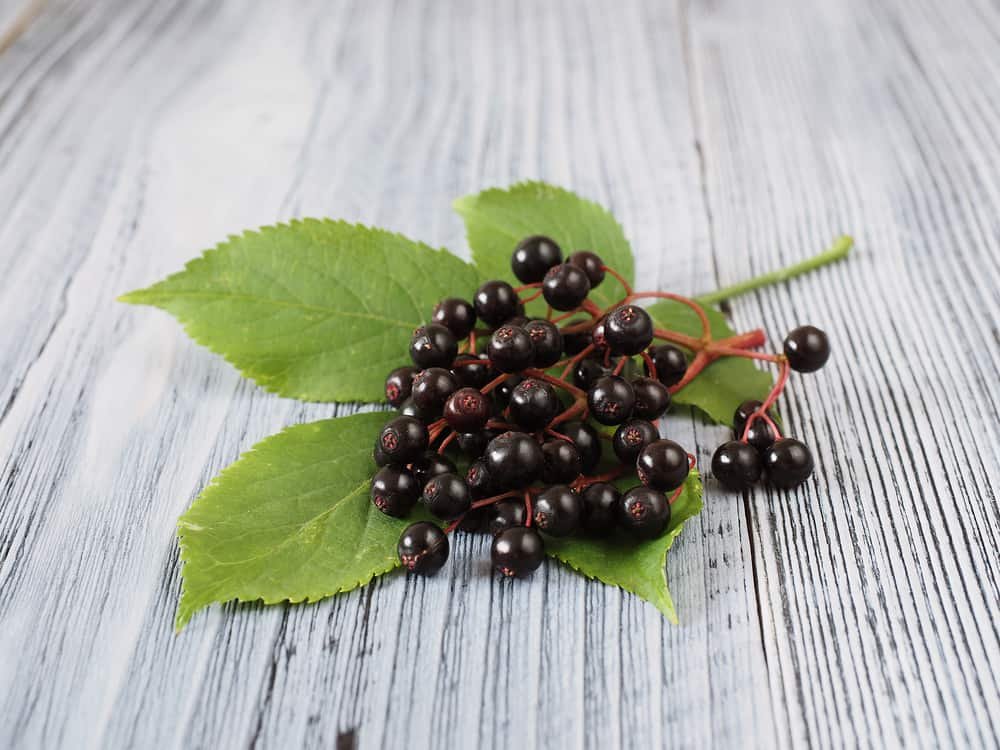
The first step in freezing Elderberry is to wash them thoroughly under cool running water. This will help get rid of any dirt or bacteria that might be present on the berries. When washing, make sure not to soak the berries as excess moisture can cause them to become mushy when frozen. Once washed and dried, spread the Elderberries out onto a baking sheet lined with parchment paper and place it in the freezer until completely frozen solid – about two hours should do it!
Goji Berries
Goji Berries are a type of sweet and tart fruit that is known for its many health benefits, including high levels of antioxidants. If you want to keep your Goji Berries in top condition, one of the best ways to do this is by freezing them. Freezing your berries will help them stay as fresh as possible and maintain their nutritional value. Here’s how to freeze Goji Berries so they remain healthy and tasty.

Start by gently rinsing the berries off with water. Place them on a baking sheet lined with parchment paper and spread out evenly. Put the baking sheet in the freezer for at least four hours, or until completely frozen. Once frozen, you can remove them from the tray and place into an airtight container or plastic bag for storage in your freezer for up to six months.
Golden Berries
If you’re looking for a way to preserve your golden berries and keep them fresh, freezing is the best option. Golden Berries are full of vitamins, minerals, and antioxidants that can help you lead a healthier lifestyle. Freezing the berries helps to lock in those nutrients so they stay fresh and healthy.
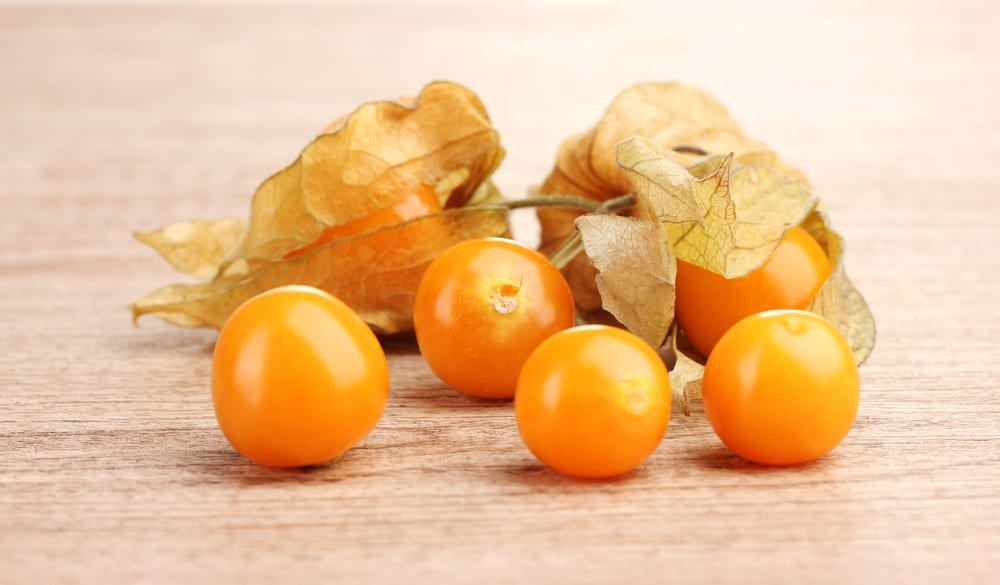
The process of freezing golden berries is quite simple. Begin by washing the berries with cold water to remove any dirt or debris from them before drying them off with paper towels. Spread the dried fruit onto an even layer on a parchment-lined baking sheet and place it in the freezer for about two hours until all of the berries have frozen solid. Once frozen, transfer them into airtight containers or freezer bags until you’re ready to use them again.
Gooseberries
Gooseberries are a tart, juicy fruit that can be used in many recipes or enjoyed on their own. Whether you grow them yourself or buy them from the market, gooseberries can be frozen to ensure they last longer and remain fresh and healthy. Here’s how:
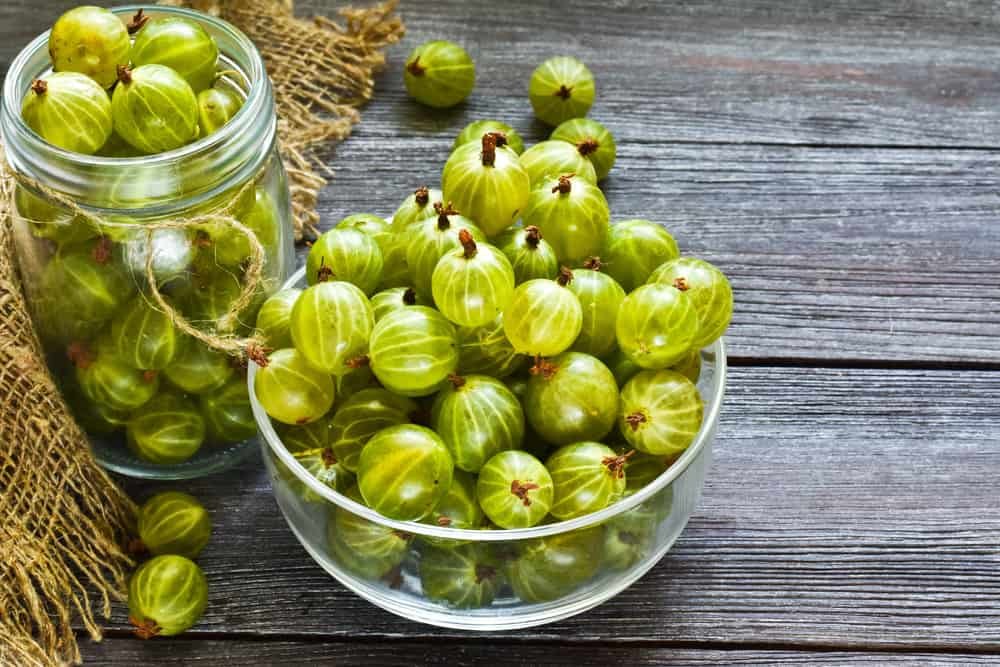
First, pick ripe berries then wash and drain them thoroughly. Before freezing, remove any stems and leaves remaining on the berries. Next, spread the gooseberries out on a baking sheet lined with wax paper or parchment paper in an even layer; this will help prevent them from sticking together during freezing. Place the tray of gooseberries in your freezer for about two hours; after two hours have passed place the now-frozen gooseberries into an airtight container or plastic bag before returning it to the freezer for long term storage.
Grapes
Do you have a large amount of grapes that are beginning to spoil? Freezing grapes is an excellent way to keep them fresh for longer. Not only do frozen grapes taste great, but they can be used in a variety of recipes such as smoothies and sorbets. By following these easy steps, you’ll be able to freeze your grapes and enjoy their sweet flavor later on.

Begin by washing the grapes with cold water and patting them dry with a paper towel or cloth. Make sure all the dirt has been removed before freezing the fruit. Next, spread out the washed grapes on a baking sheet lined with parchment paper or wax paper. Place them in the freezer for 2-3 hours until they are completely frozen solid. Finally, transfer the frozen grapes into airtight freezer-safe bags or containers and store them in your freezer until ready to use. Enjoy!
Grapefruit
If you love grapefruit, but don’t want to eat it all at once, freezing the fruit is a great way to keep it fresh and healthy. Freezing grapefruit allows you to save the extra for later without compromising flavor or texture. The process requires minimal effort and can help you get more out of your favorite citrus fruit.

The best way to freeze grapefruit is by first slicing the fruit in half, then scooping out any seeds that may be present. Once this step is complete, cover each half with plastic wrap or place them in an air-tight container and put them into the freezer. After approximately one hour in the freezer, they should be ready for consumption. When it comes time to thaw out your frozen grapefruits, simply move them from the freezer to the refrigerator overnight so they can slowly defrost before eating.
Guava
Guava is a delicious fruit that can be eaten as an on-the-go snack or used to make healthy juices. It is packed with fiber, vitamins and minerals, making it a great addition to any diet. To keep your guavas fresh and healthy for longer periods of time, freezing them can be the best solution. Here are some tips on how to freeze guava properly and safely:
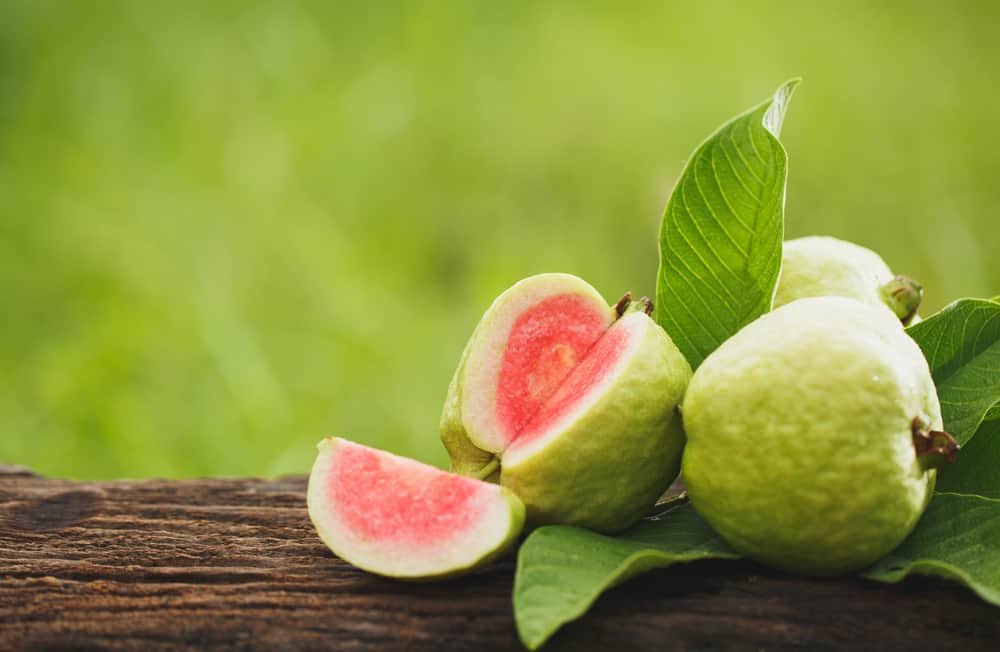
Start by washing the guava thoroughly in cold water. Then cut the fruit into small pieces, removing any seeds if needed. Place the guava chunks into an airtight freezer bag or container, being sure to label it with the date of freezing for future reference. Finally, place the stored fruits in a single layer in your freezer and leave them there until ready to eat!
Jackfruit
Freezing Jackfruit is a great way to keep them fresh and healthy. It’s also an excellent way to preserve your Jackfruits year-round, so you can enjoy their sweet, tropical flavors anytime. Here’s what you need to know about freezing your Jackfruit.

First of all, it’s important to choose ripe fruits that are free from blemishes or bruises. Once you have the perfect fruit, wash it thoroughly before cutting into chunks and then place them on a wax paper-lined baking sheet in a single layer. Place the baking sheet inside the freezer for at least 6 hours; this will allow the chunks of jackfruit to freeze solid. Finally, transfer the frozen pieces of jackfruit into an airtight container or plastic bag and store them in the freezer for up to 8 months.
Jujube
Jujube, also known as Chinese dates, are a nutritious and delicious fruit with many health benefits. To keep them fresh and healthy for longer, they should be frozen. This article will provide easy steps on how to freeze jujubes in order to ensure that their flavor is maintained and the nutrients are not lost.

To begin freezing jujubes, first select ripe but firm fruits that have a glossy skin without blemishes or cuts. Rinse the fruit under cold running water to remove any dirt or debris. Cut off both ends of each date and then cut them into small slices if desired; this helps to make sure they freeze evenly. Spread the pieces out on a baking sheet lined with parchment paper and place it in the freezer for about two hours until the pieces are completely frozen.
Juniper Berries
If you are lucky enough to have a juniper bush or tree in your yard, you can easily reap the rewards of these delicious berries and preserve their freshness for weeks or even months. Freezing is one of the best ways to keep juniper berries healthy and ready for use. To freeze juniper berries, the process only takes a few simple steps.

Start by washing the berries thoroughly with cold water and gently patting them dry with a paper towel or cheesecloth. Next, spread them out on a baking sheet lined with parchment paper. Place them in the freezer until frozen solid, usually about one hour. Then use an airtight container such as a zip-top bag or sealed Tupperware to store the frozen juniper berries in your freezer until ready to use.
Kiwi
Freezing kiwis is a great way to keep them fresh and preserve their flavor for up to six months. Whether you’re trying to make the most out of a seasonal harvest or just want to save some for later, freezing kiwis is an easy process that will let you enjoy them all year round. Here are some tips on how to freeze kiwi in order to maintain its flavor and texture:

Firstly, it’s important to prepare the fruit properly. Peel the skin off the kiwi and then cut it into cubes or slices – whichever shape you prefer. Once sliced, lay out the pieces onto a baking tray lined with parchment paper so they don’t stick together during the freezing process.
Kumquat
Freezing kumquats is an easy and cost-effective way to maintain their freshness for longer periods of time. Kumquats are highly perishable and can spoil quickly, but with the right techniques, you can extend their shelf life without compromising on flavor or nutrition. Here’s how to freeze kumquats so they’re still delicious once thawed:

First, wash the kumquats in cold water and remove any stems or leaves. Cut each one into small slices and spread them out on a baking sheet lined with wax paper. Place the sheet in the freezer for approximately two hours until all pieces are completely frozen through. Then transfer them to an airtight container or heavy-duty zipper bag. Label it with the date before placing it back in the freezer for up to 6 months!
Lemon
Lemons are an essential ingredient for many recipes, but they can be difficult to store. Fortunately, freezing lemons is a great way to keep them fresh and healthy for months at a time. This simple process will help you preserve the vitamin-packed citrus fruit without compromising its flavor or texture.

First, it’s important to select firm lemons that are free of any blemishes or bruises. Slice them into quarter-inch thick pieces and spread them in a single layer on a parchment-lined baking sheet. Place the tray in the freezer and allow the lemon slices to freeze completely (usually overnight). Once hardened, transfer the slices into an airtight container or sealable bag and store them in the freezer for up to six months without losing quality.
Lime
Fresh limes are a fantastic ingredient to keep on hand in the kitchen, as they provide a burst of flavor and zest to any dish. Unfortunately, limes can go bad quickly if not stored properly. Freezing is an easy way to make sure your limes stay fresh and healthy for longer. Here’s how:

Start by washing the lime with cold water and drying completely. Then cut into wedges or slices, depending on how you plan to use them later. Place the pieces in a single layer on a baking sheet lined with parchment paper or waxed paper and freeze for about two hours until solidified; this will prevent them from sticking together when transferred to storage containers or bags. Once frozen, transfer the limes into air-tight freezer bags or plastic containers labeled with the date so you’ll know when it’s time for a new batch!
Longan Fruit
Freezing longan fruit is an effective way to keep them fresh and healthy. This tropical fruit has a sweet, juicy flavor, making it a popular snack or ingredient in many dishes. By freezing the fruit, you can extend its shelf life by months while still enjoying the same taste and nutritional benefits.
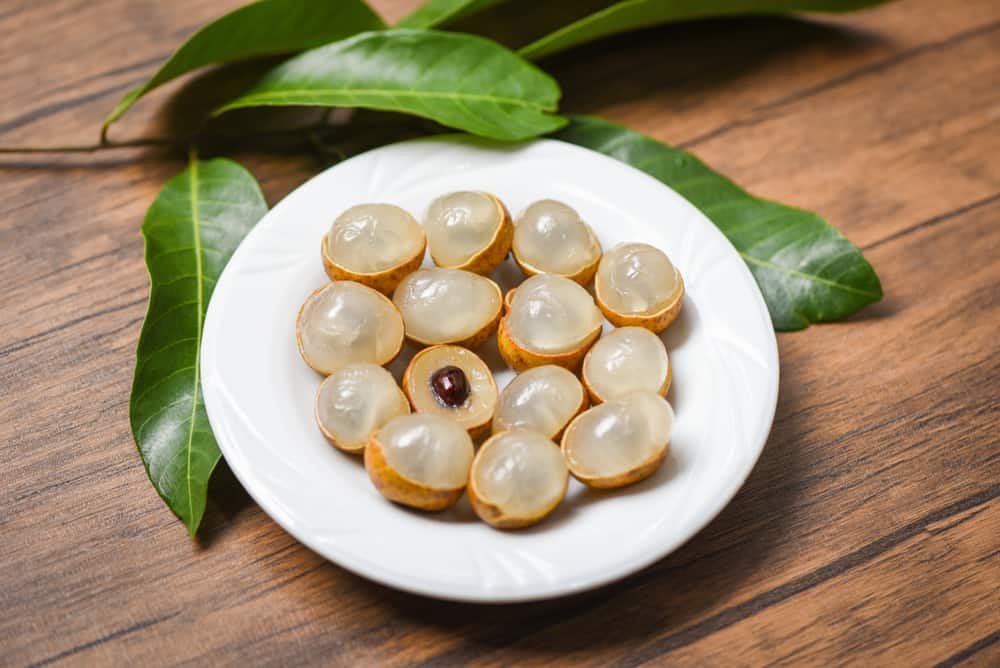
The first step to freezing longan is to make sure the fruit is fully ripened. This will ensure that all of its natural sugars are present and that it will have its optimal taste after freezing. Once ripe, you should rinse the fruit with cold water before patting it dry with a clean cloth or paper towel. Then, place each piece of longan on a tray lined with parchment paper and freeze for at least three hours before transferring them into an airtight container or freezer bag.
Lychee
Freezing lychee is a great way to keep them fresh and healthy for a long period of time. Lychee is an exotic tropical fruit that can be eaten raw, used in desserts, or turned into juice. To successfully freeze lychee, you must select the best quality ripe fruit and follow the simple steps listed below.
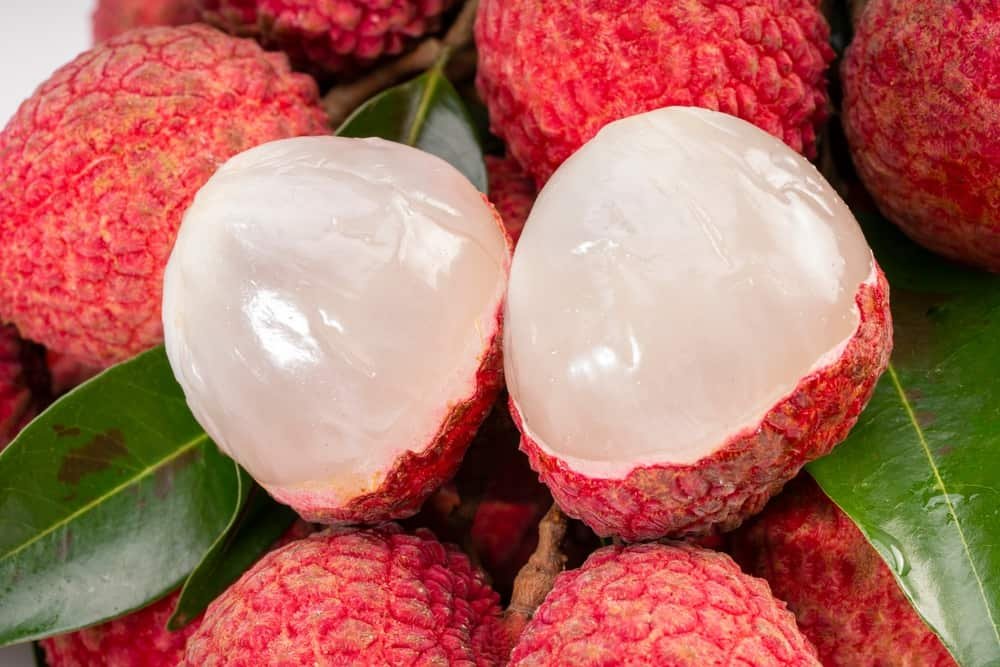
First, make sure all the fruits are washed properly and cleaned of any dirt, debris or insects. Then, remove all stems and husks from each piece of fruit carefully to ensure none of the flesh is damaged. After that, lay out all pieces on a baking tray lined with parchment paper for even freezing. Lastly, place tray in freezer for at least 3 hours until fruits are completely frozen before transferring them to a freezer bag or air-tight container for longer storage.
Mangoes
Mangoes are a sweet and delicious summer fruit that can be enjoyed year-round with proper freezing techniques. Freezing mangoes is a great way to extend their shelf life and enjoy them even after they’re no longer in season. It’s a fairly easy process that takes only minutes to complete, here’s how to do it.

Start by washing the mangoes thoroughly under cold running water. Peel them then cut out any large pieces of fiber or seed from the center of the fruit. Cut up the mango into cubes or slices, depending on your preference, then place them on a parchment-lined baking sheet in an even layer so they aren’t touching each other. Place the baking sheet in the freezer for at least three hours until frozen solid.
Melon
Melons are a juicy and delicious summertime treat, but they can quickly spoil if not stored properly. If you want to keep your melon as fresh and healthy as possible, then freezing is the way to go. Freezing can help preserve the natural vitamins and minerals that are found in melons so that you can enjoy them for weeks or even months afterward. Here is how to freeze your melon to get the best results:

First, choose a ripe melon that has just been picked from the garden or purchased from the store. Cut it into cubes or slices, making sure all pieces are of equal size so they will freeze evenly. Place the cut pieces onto a baking sheet lined with parchment paper and place in freezer for at least two hours, until frozen solid.
Mulberry
Freezing mulberries is a great way to keep them fresh and healthy for long periods of time. Mulberries are an incredibly versatile fruit, often used in jams, smoothies, baking or as a topping for desserts. If you want to make the most out of your mulberry harvest, freezing is the way to go! Here’s how you can do it:

First, thoroughly wash and dry your mulberries with a paper towel. Gently remove any debris and stems before transferring the berries onto a lined baking sheet. Place the tray into the freezer for several hours until they are completely frozen. Once done, transfer them into an airtight container or bag and store in freezer till you need them. When ready to use simply thaw out at room temperature or run under some lukewarm water and enjoy!
Nectarines
Nectarines are a tasty and healthy summertime snack, but they can be difficult to keep fresh without proper storage. Luckily, freezing nectarines is an easy way to keep them around for longer periods of time. Freezing nectarines helps retain their flavor, texture and nutritional value while preventing spoilage from occurring. Here are some tips for freezing nectarines to ensure you get the most out of your favorite summer fruit.
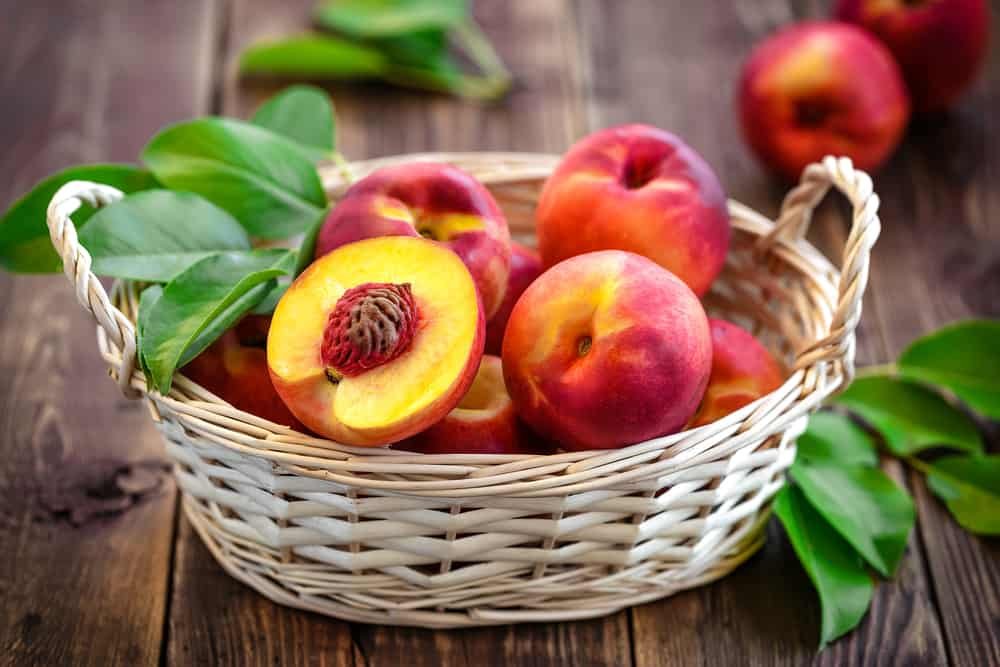
First, start by selecting ripe yet firm nectarines with no signs of bruising or damage. Thoroughly wash the fruit in cool water before patting it dry with a clean cloth or paper towel. Cut the nectarine into halves or slices, depending on your preference. Then spread the pieces evenly onto a baking sheet lined with parchment paper and place in the freezer for two hours until frozen solid.
Olives
Freezing olives is a great way to keep them fresh and healthy in the long run. Olives are a popular snack item and can add flavor to many dishes, but they don’t stay fresh for a very long time. To ensure that your olives remain in peak condition, try freezing them! This simple method will keep your olives safe from bacteria growth so that you can enjoy their flavor for months on end.

The process of freezing olives is quite simple and requires only minimal effort. Start by selecting ripe or firm black olives with no signs of spoilage. Wash the olives thoroughly in cold water, removing any debris or residue before patting them dry with paper towels. Next, spread the washed olives out on a baking sheet lined with parchment paper and freeze for two hours until completely frozen solid.
Oranges
In a hurry and need to keep your oranges fresh for later? Freezing oranges can be a great way to stock up and extend the life of these juicy fruits. Oranges are an excellent source of Vitamin C, potassium, folate and other essential vitamins and minerals that we need in our diets. With freezing, you can make sure your family has access to healthy snacks all year long.

If you’re not sure how to go about freezing oranges, here’s what you need to know. First things first, you will have to wash them thoroughly with a solution of water and vinegar or lemon juice. Make sure there is no dirt left on the skin so as not to contaminate them when frozen. Then cut the oranges into slices or wedges – whatever shape works best for you!
Papaya
Freezing papaya is a great way to keep them fresh and healthy for longer. If you do not have the space to store fresh papaya, freezing can be the answer. Papayas are rich in vitamins and minerals, so it makes sense to preserve them as best you can. Here is how you can freeze papayas for maximum health benefits and extended shelf life.

First, select ripe but firm papayas with unblemished skin. Cut into pieces of your desired size and discard any seeds before putting the pieces in a zip-lock bag or an airtight container. Make sure all of the air has been removed from bags so that your frozen fruit will last longer. Put in the freezer until ready to use – frozen fruits can last up to 12 months when stored correctly.
Passion Fruit
Are you a fan of the tropical and fragrant passion fruit? If so, freezing it is an excellent way to keep your passion fruit fresh and healthy for longer. Freezing passion fruits is an easy task that can be done in a few simple steps. With proper storage techniques, you can enjoy ripe and flavorful passion fruits even when they’re out of season.
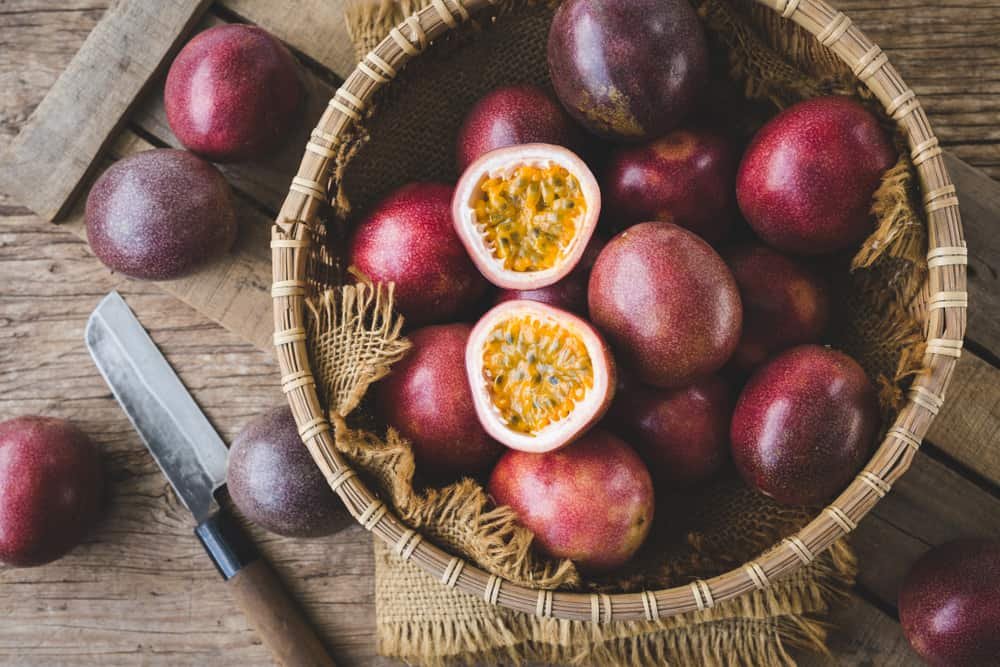
When freezing passion fruit, it’s important to start with ripe fruits. Unripe or overripe ones are not suitable for freezing as their flavor will deteriorate during the process. Once you have selected your desired ripeness level, wash them carefully under running water and pat dry with a paper towel before placing them on a baking tray lined with parchment paper. Make sure each piece has enough room between them on the tray before putting it into the freezer. This will help prevent clumping when frozen solid after several hours.
Peaches
Peaches are a delicious summertime treat, but they don’t last long. To get the most out of your peaches, it’s important to know how to properly store them. Freezing peaches is an easy and effective way to keep your fruit fresh for months. Here are some simple steps on how to freeze peaches so you can enjoy their delicious flavor all year round.

To preserve your peaches, start by selecting only ripe fruit that has been washed and dried thoroughly. Cut away any rotten or bruised spots before cutting each peach into cubes or slices – whichever you prefer for later use. Place the cut up pieces onto a baking sheet lined with parchment paper and place in the freezer until frozen solid, typically about 8 hours. Once frozen, transfer the pieces into airtight storage containers or sealable plastic bags and label with freezing date before returning them to the freezer.
Pears
Pears are a sweet and delicious fruit that can be enjoyed year-round, even when it is out of season. Freezing pears is an easy way to keep them fresh and ready to eat whenever you want. Follow these steps to properly freeze your pears.

First, select ripe pears with bright skins and no blemishes or soft spots. Wash the fruit under cool running water, rubbing off any dirt or debris on the skin before cutting them in half and removing the core with a spoon. Slice each pear into thin wedges or cubes, depending on what they will be used for later. Blanching the cut pieces in boiling water for two minutes helps retain their texture during freezing. Afterwards, plunge them immediately into ice cold water until cooled completely before draining off any excess moisture.
Persimmon
Preserving the fresh, vibrant flavor of persimmon fruits can be difficult. But with a few simple steps, you can successfully freeze your favorite fruits to keep them fresh and healthy for up to 12 months! Freezing persimmons is an easy process that requires minimal effort and supplies. Here are the basics of how to freeze persimmons for maximum freshness.
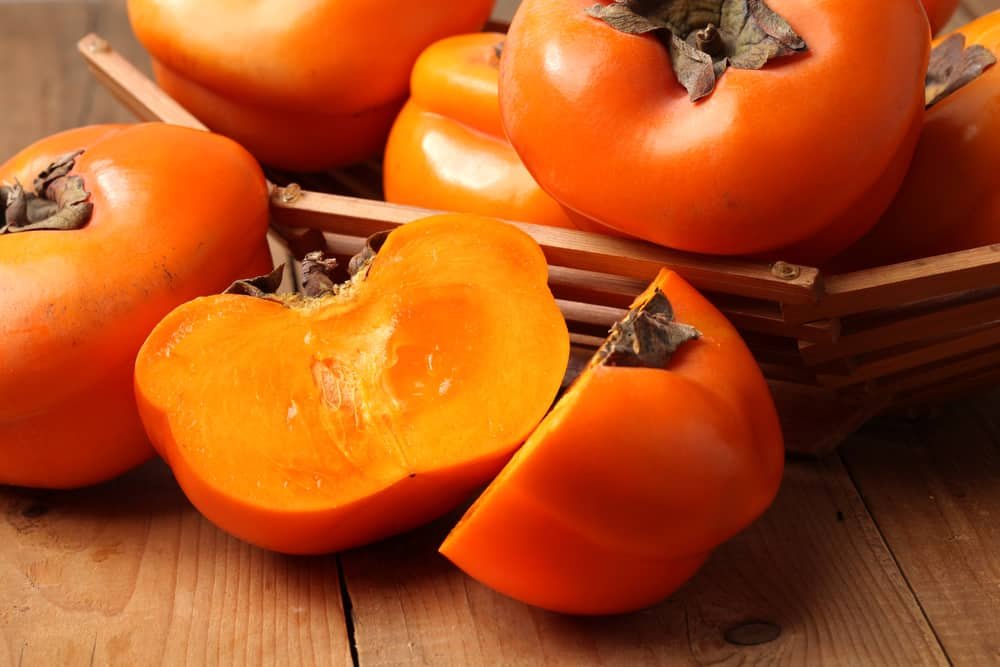
First, choose ripe but firm persimmon fruits. Separate the pulp from their skin and cut each fruit into halves or cubes depending on your preference. Spread out the pieces on a parchment-lined baking sheet and place it in the freezer overnight until they are completely frozen solid. This will help retain their shape without clumping together when stored in containers or bags later on.
Pineapple
If you’re looking for a way to keep your pineapple fresh and delicious, freezing is definitely the way to go. Freezing pineapple is a great way to enjoy the taste of summer all year round, as it locks in flavor and preserves it from spoiling. Here are some tips on how to freeze pineapple so you can enjoy its sweet taste whenever you want.

Start by washing your pineapple, cutting off the top and bottom of the fruit, then removing the skin. Once peeled, use a sharp knife or mandolin slicer to cut into thin slices or cubes; if you want smaller pieces than that, use a food processor. Place the pieces on a parchment lined baking sheet in an even layer and place them in your freezer; this will help prevent them from sticking together once they’re frozen solid.
Plums
When it comes to fresh fruit, plums are a healthy snack that can be enjoyed year-round. A great way to keep them fresh is by freezing them. This easy process will allow you to store the plums for several months, preserving their flavor and texture. Through proper storage techniques, you can enjoy these sweet treats any time of the year.

To begin this freezing process, start by washing and drying your plums thoroughly with a paper towel or dish cloth. After they’re dry, cut them into quarters or halves depending on their size and remove the pits. Then spread out the pieces onto a baking sheet lined with wax paper or parchment paper in an even layer so they don’t stick together once frozen. Place the tray in the freezer for 4-6 hours until solid and store in an airtight container or bag when finished.
Pomegranate
Freezing pomegranates is an excellent way to preserve their freshness and flavor. Studies have shown that freezing pomegranates can help extend their shelf life by up to 12 months. It’s a great way to enjoy the delicious taste of pomegranates all year long. To freeze pomegranates, first you should clean them with cold water and pat them dry with paper towels.

Cut the fruit in half and gently remove the seeds with your fingers or a spoon. Place the seeds in a single layer on a baking sheet, making sure they are not touching each other. Place them in the freezer for two hours until they become firm; then transfer them into an air-tight container or bag and store in the freezer for up to 12 months.
Pomelo
If you love the unique, juicy flavor of pomelo but often find yourself with more than you can eat before it goes bad, then freezing it may be your best bet. Freezing pomelo helps to keep them fresh and healthy for an extended period of time without compromising their taste. Here’s a step-by-step guide on how to freeze pomelo for maximum freshness.
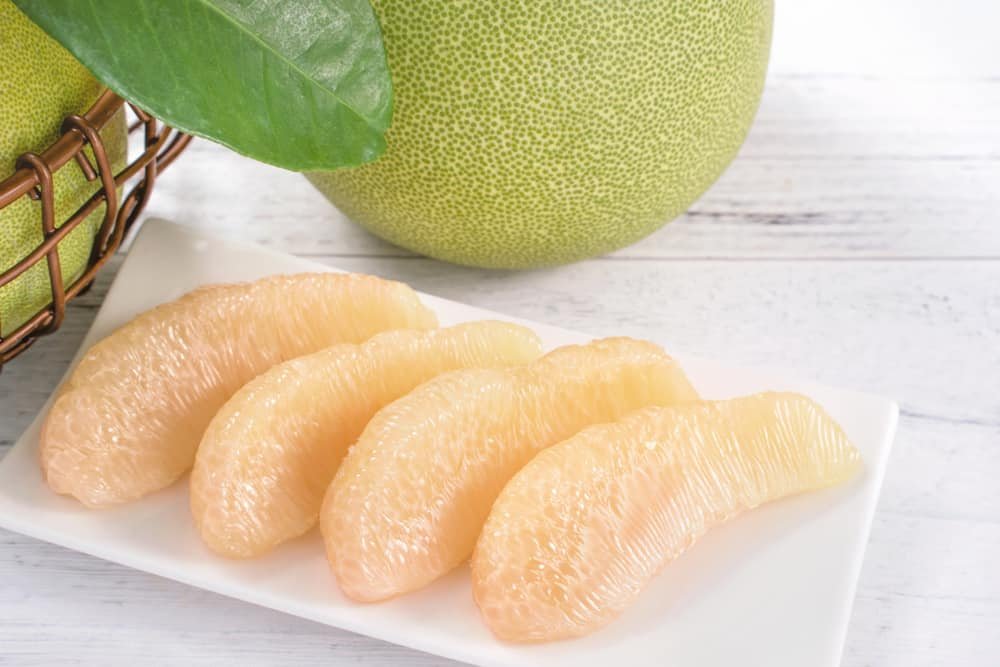
First, select the freshest pomelos that are firm with unblemished rinds. Wash them thoroughly and dry completely with a paper towel or kitchen cloth. Cut away any bruised or damaged parts of the fruit and discard these pieces. Peel off the skin as well as all white membranes underneath as they can give off a bitter taste when frozen.
Rambutan
If you’ve ever tasted a Rambutan fruit, then you know how delicious and unique it can be. But, if you want to keep these tasty treats at their freshest, freezing them is the best way to go. Freezing Rambutan can not only help preserve the fruit for an extended period of time, but it also keeps all of its nutrients intact. Here’s how to freeze Rambutan for maximum freshness.
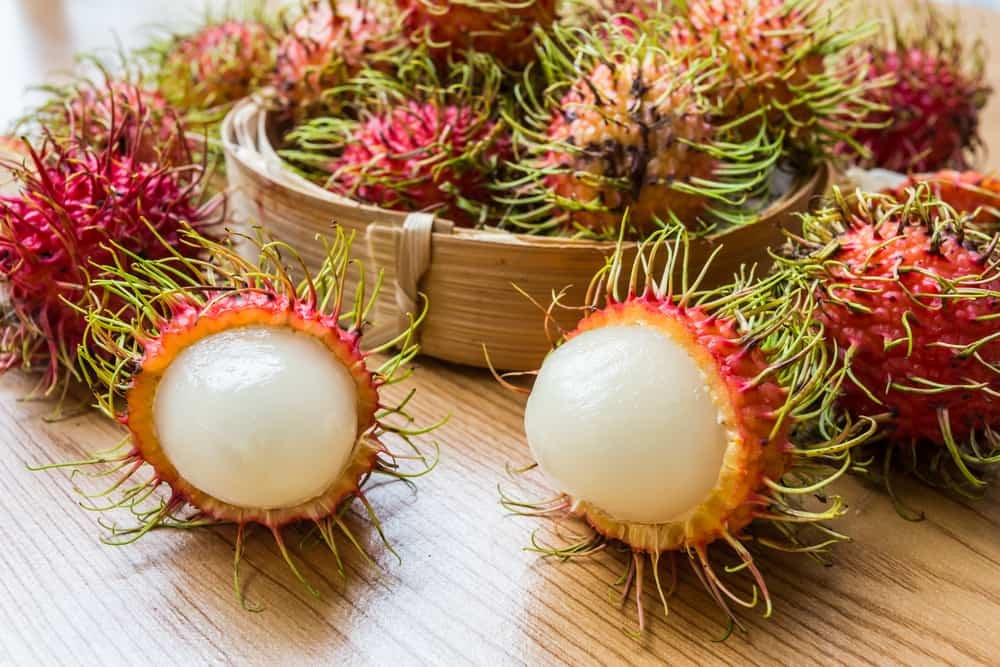
First, rinse your Rambutans thoroughly with cold water and pat them dry with a paper towel. Then peel off the skin and remove the seed before placing them in an airtight container or freezer bag. Seal the container or bag tightly and place it in a single layer on a baking sheet before putting it in the freezer.
Raspberries
Raspberries are a delicious and healthy snack that can be enjoyed anytime of the year. But with raspberries being so delicate, it’s essential to find a way to store them correctly so they can last longer and remain as fresh as possible. To do this, freezing raspberries is the best option. Freezing helps preserve the flavor, texture, and nutritional value of these small yet mighty berries. Here are some tips on how to freeze raspberries to keep them fresh:

First off, make sure your raspberries are completely dry before freezing them. The easiest way to do this is by laying out your berries on a paper towel-lined plate or tray for 10-15 minutes until no moisture remains.
Redberries
Redberries are a great addition to any meal or snack. They’re incredibly versatile, packed with antioxidants and nutrients, and taste delicious when frozen. But if you want to keep your redberries fresh for longer than a few days after buying them, it’s important to know how to freeze them properly. Here’s how you can do just that!

The first step is to thoroughly rinse the redberries in cold water before patting them dry with a paper towel. This will help get rid of any dirt or bacteria that might be on the fruit before freezing it. Next, spread out the berries on a baking sheet lined with parchment paper and place in the freezer for several hours until they are completely frozen solid.
Rhubarb
Rhubarb is a tart and tangy plant that’s packed with essential vitamins and minerals. Not only does this nutritious vegetable taste delicious, but it’s also a great source of dietary fiber, calcium, and vitamin K – making it an important part of any balanced diet. Unfortunately, fresh rhubarb can spoil quickly if not stored properly. To ensure your rhubarb stays fresh for longer periods of time, you should consider freezing the stalks to retain their nutritional content. Here are some tips on how to freeze rhubarb so you can keep them fresh and healthy:

When selecting your rhubarb at the grocery store or farmers market, choose stalks that are firm and brightly colored for the best flavor.
Starfruit
Starfruit, also known as carambola, is a tropical fruit that is full of flavor and nutrition. If you have recently purchased starfruit and would like to keep them fresh for an extended period of time, freezing them may be the ideal way to preserve their health benefits and taste. Freezing starfruit can be done in a few simple steps; here are some guidelines on how to freeze starfruit in order to maintain its freshness.
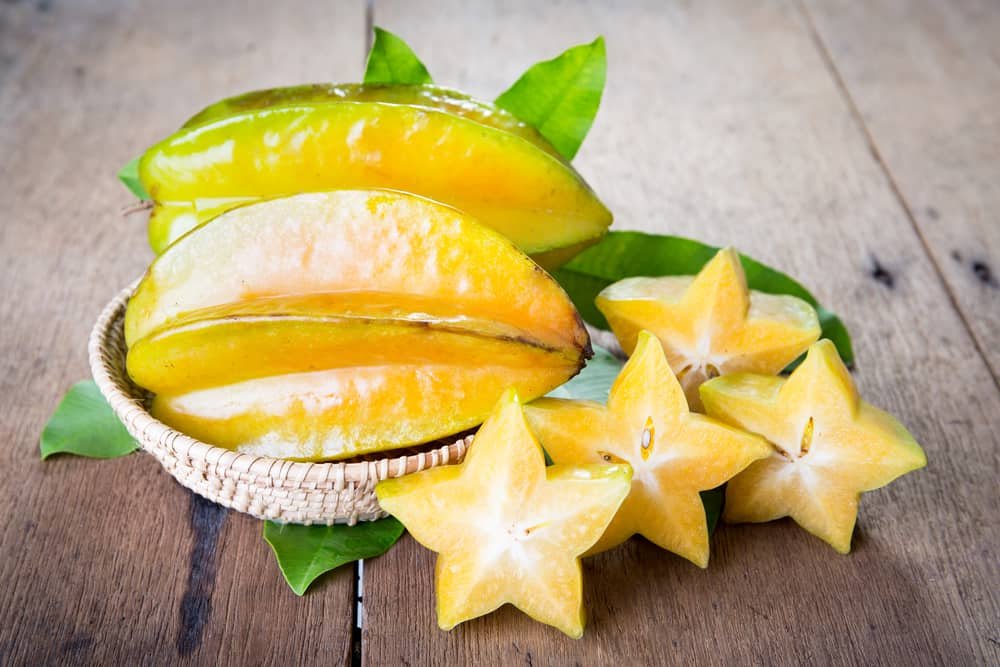
To begin with, you must carefully wash your starfruits before freezing them. Make sure there are no blemishes or spots on the fruit as these can diminish the quality after being frozen. Slice each starfruit into thin slices about 1/4 inch thick so it freezes evenly and quickly.
Strawberries
Strawberries are a delicious and juicy summertime snack, but if you can’t eat them all before they spoil, freezing is the best way to keep them fresh. Freezing strawberries extends their shelf life and preserves their flavor, color, and texture. With just a few simple steps, this guide will teach you how to freeze your berries so they last as long as possible.

First off, clean the berries off with cold water and spread them out on a kitchen towel or paper towels to dry. Make sure each berry is completely dry before placing it in the freezer; any moisture left on it may give it an unpleasant texture when thawed. Then remove the green stems and place the berries in an airtight container or zip-top bag with parchment paper between layers of fruit to prevent them from sticking together.
Tangerine
Freezing tangerines is a simple and effective way to keep them fresh, healthy and flavorful for an extended period of time. Tangerines are one of the most popular citrus fruits because they’re sweet, easy to peel and full of nutrients like Vitamin C. With proper storage techniques, it’s possible to freeze tangerines so that they maintain their flavor and nutritional content over time. Here are some helpful tips on how to freeze tangerines in order to keep them fresh and healthy.

First, select only firm, ripe tangerines with unblemished skins for freezing. Wash the fruit thoroughly before cutting into slices or wedges if desired. Place the pieces on a cookie sheet lined with wax paper or plastic wrap before placing in the freezer for two hours until completely frozen solid.
Ugli Fruit
Do you want to keep Ugli Fruit fresh and healthy for longer? Freezing is a great way to extend the shelf life of these tart oranges. It’s surprisingly easy, too! Here’s what you need to know about freezing Ugli Fruit.
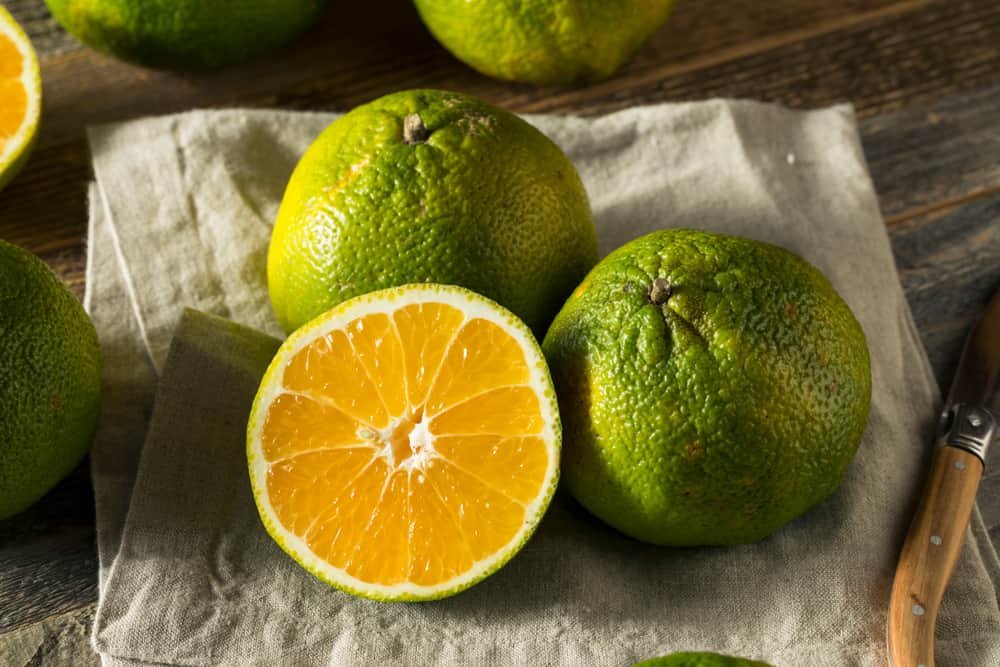
First things first: make sure your fruit is ripe but still firm. If it’s too soft or past its prime, the flesh will be mushy once thawed. Wash each fruit thoroughly under running water and pat dry with paper towels. Slice into smaller pieces if preferred — this will help them freeze faster. Arrange them in a single layer on a baking sheet lined with parchment paper and place in the freezer until they become solid (this will take several hours). Once frozen, transfer them to airtight containers or freezer-safe bags and label accordingly so you know when they were added.
Watermelon
Watermelons are a delicious and juicy summertime snack, but they can sometimes be hard to keep fresh for long periods of time. One way to maximize the lifespan of watermelon is by freezing them so that their natural sugars and flavors stay intact. Freezing watermelon is a simple process that requires minimal effort and materials.

To freeze watermelon, first make sure you have a sharp knife, cutting board, and freezer-safe containers or bags on hand. Cut the melon into cubes or slices, then use paper towels to pat the pieces dry before transferring them into your chosen container or bag. Make sure not to overfill your container – leaving some room between the pieces will help prevent clumping. Finally, pop it into the freezer until you’re ready to eat it!

